Neutrophils direct preexisting matrix to initiate repair in damaged tissues
- PMID: 35354953
- PMCID: PMC8986538
- DOI: 10.1038/s41590-022-01166-6
Neutrophils direct preexisting matrix to initiate repair in damaged tissues
Abstract
Internal organs heal injuries with new connective tissue, but the cellular and molecular events of this process remain obscure. By tagging extracellular matrix around the mesothelium lining in mouse peritoneum, liver and cecum, here we show that preexisting matrix was transferred across organs into wounds in various injury models. Using proteomics, genetic lineage-tracing and selective injury in juxtaposed organs, we found that the tissue of origin for the transferred matrix likely dictated the scarring or regeneration of the healing tissue. Single-cell RNA sequencing and genetic and chemical screens indicated that the preexisting matrix was transferred by neutrophils dependent on the HSF-integrin AM/B2-kindlin3 cascade. Pharmacologic inhibition of this axis prevented matrix transfer and the formation of peritoneal adhesions. Matrix transfer was thus an early event of wound repair and provides a therapeutic window to dampen scaring across a range of conditions.
© 2022. The Author(s).
Conflict of interest statement
The authors declare no competing interests.
Figures
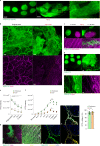
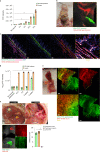
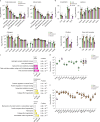
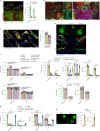
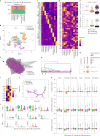
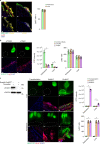
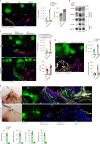
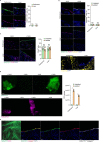

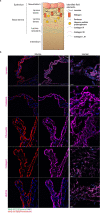
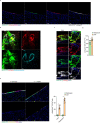
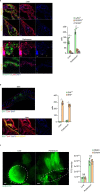
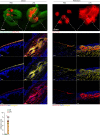
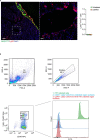
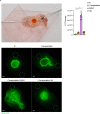

Comment in
-
Neutrophils guide pre-existing matrix into injured organs to initiate tissue repair.Nat Immunol. 2022 Apr;23(4):472-473. doi: 10.1038/s41590-022-01173-7. Nat Immunol. 2022. PMID: 35354952 No abstract available.
Similar articles
-
Biochemical events in peritoneal tissue repair.Eur J Surg Suppl. 1997;(577):10-6. Eur J Surg Suppl. 1997. PMID: 9076447 Review.
-
Response of the human peritoneal mesothelial cell to injury: an in vitro model of peritoneal wound healing.Kidney Int. 1998 Dec;54(6):2160-9. doi: 10.1046/j.1523-1755.1998.00177.x. Kidney Int. 1998. PMID: 9853283
-
Common cellular events occur during wound healing and organ regeneration in the sea cucumber Holothuria glaberrima.BMC Dev Biol. 2007 Oct 18;7:115. doi: 10.1186/1471-213X-7-115. BMC Dev Biol. 2007. PMID: 17945004 Free PMC article.
-
Identification of macrophages at the site of peritoneal injury: evidence supporting a direct role for peritoneal macrophages in healing injured peritoneum.Fertil Steril. 2000 May;73(5):988-95. doi: 10.1016/s0015-0282(00)00490-8. Fertil Steril. 2000. PMID: 10785226
-
The role of growth factors in peritoneal healing: transforming growth factor beta (TGF-beta).Eur J Surg Suppl. 1997;(577):17-23. Eur J Surg Suppl. 1997. PMID: 9076448 Review.
Cited by
-
Neutrophils at the Crossroads: Unraveling the Multifaceted Role in the Tumor Microenvironment.Int J Mol Sci. 2024 Mar 2;25(5):2929. doi: 10.3390/ijms25052929. Int J Mol Sci. 2024. PMID: 38474175 Free PMC article. Review.
-
Matrix-producing neutrophils populate and shield the skin.Nature. 2025 May;641(8063):740-748. doi: 10.1038/s41586-025-08741-5. Epub 2025 Mar 19. Nature. 2025. PMID: 40108463
-
Role of the serosa in intestinal anastomotic healing: insights from in-depth histological analysis of human and murine anastomoses.BJS Open. 2024 Sep 3;8(5):zrae108. doi: 10.1093/bjsopen/zrae108. BJS Open. 2024. PMID: 39230923 Free PMC article.
-
Neutrophils guide pre-existing matrix into injured organs to initiate tissue repair.Nat Immunol. 2022 Apr;23(4):472-473. doi: 10.1038/s41590-022-01173-7. Nat Immunol. 2022. PMID: 35354952 No abstract available.
-
Immune Cell Plasticity in Inflammation: Insights into Description and Regulation of Immune Cell Phenotypes.Cells. 2022 Jun 2;11(11):1824. doi: 10.3390/cells11111824. Cells. 2022. PMID: 35681519 Free PMC article. Review.
References
Publication types
MeSH terms
Grants and funding
LinkOut - more resources
Full Text Sources
Other Literature Sources
Molecular Biology Databases

